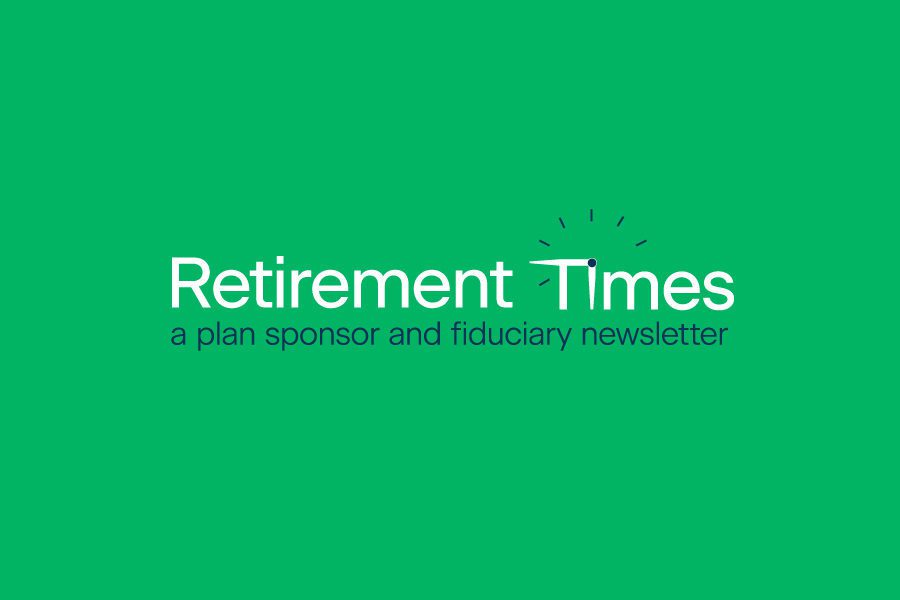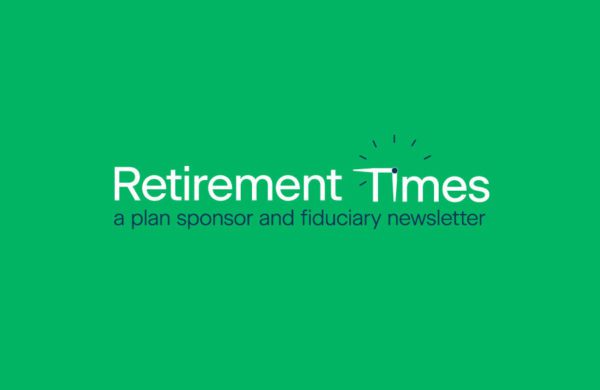The Case for Investment Refresh
Investment refresh is an optional extension to automatic enrollment whereby participants would be notified that, as of a certain date, their current investment allocation will be transferred to the plan’s qualified default investment alternative (QDIA) investment. The QDIA is frequently an age/risk appropriate target date fund (TDF). Any participant may opt out of this action prior to or at any time after the transfer date.
The premise underlying investment refresh is that participants do not always make prudent investment decisions. We frequently find that, although the vast majority of participants are deferring into the plan’s TDF, their prior assets often do not get transferred. This is an interesting but contradictory fact that can be attributed to a conscious act, simple neglect or potential loss aversion, but the reality is that it may be detrimental to the participants’ actual intent or their best interest. In addition, we also know that there is often a mismatch between the level of risk participants tell us they are comfortable with and the risk level in the actual portfolio they have constructed.
Clearly, many participants would benefit from additional assistance. Our experience tells us that investment refresh could provide significant help.
Excessive Fee Litigation: The Best Defense is Compliance
Excessive fee litigation is increasing at a steady pace, and all signs are it will continue to increase. The positive side of this situation is that we now have more caselaw to consider as we work toward compliance in creating a “best defense.” Early caselaw did not reflect the consistency of court decisions. Some court rulings were in direct conflict with those of other courts, and some did not seem well reasoned.
Recent excessive fee caselaw does help us determine a more solid foundation for liability mitigation. Clearly, it is most important to have a robust process for making prudent investment decisions, as per ERISA “procedural prudence.” This has always been the case, but now we have more clarity in how this process should be conducted. Courts want to see evidence that based on the information that the fiduciaries had at the time they made their decision, a robust structured process was followed. As always, it is crucial that you follow your investment policy statement and document your process and reasons for all fiduciary level decisions.
QDIA…Why is it important?
The qualified default investment alternative (QDIA) is arguably the most important investment in a plan’s investment menu. By far the most often selected QDIA investment is a target date fund (TDF). TDFs are typically the only investment selection that offers unitized professionally managed portfolios that reflect the participants’ time horizon today and as they go to and through retirement.
TDFs are tied to the anticipated year of your retirement. Retiring in 2035? The 2035 TDF is the easy pick. This portfolio will be professionally managed to become more conservative as you approach your retirement. This de-risking is based on an investment “glide path” that contains more aggressive investments during the participant’s younger years and utilizes more conservative investments as retirement approaches.
TDF QDIA selection is important for plan fiduciaries as well. The Department of Labor (DOL) has indicated that if the TDF has been prudently selected and commensurate with the plan’s participant demographics, the suite meets certain structure requirements and required notices are provided, fiduciary liability mitigation would be available. Prudent process entails identifying your participant demographic needs. Your participant demographic need may tend towards a low-risk portfolio (e.g. participants are on track for a satisfactory retirement), or perhaps a more aggressively positioned portfolio (e.g. less savings so the need to obtain higher returns), or perhaps a multiple glidepath approach for a financially non-homogenous population.
Prudence of TDF selection is also determined by cost relative to other TDFs with similar risk levels, as well as the quality of underlying investments.
Securities offered through Kestra Investment Services, LLC (Kestra IS), member FINRA/SIPC. Investment advisory services offered through Kestra Advisory Services, LLC (Kestra AS) an affiliate of Kestra IS. Kestra IS and Kestra AS are not affiliated with Higginbotham.
The “Retirement Times” is published monthly by Retirement Plan Advisory Group’s marketing team. This material is intended for informational purposes only and should not be construed as legal advice and is not intended to replace the advice of a qualified attorney, tax adviser, investment professional or insurance agent. (c) 2018. Retirement Plan Advisory Group.


